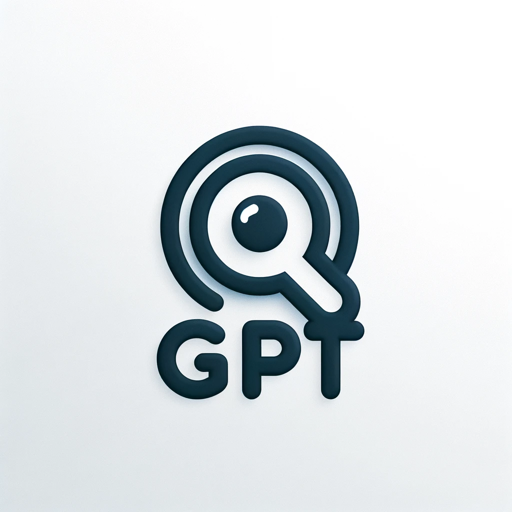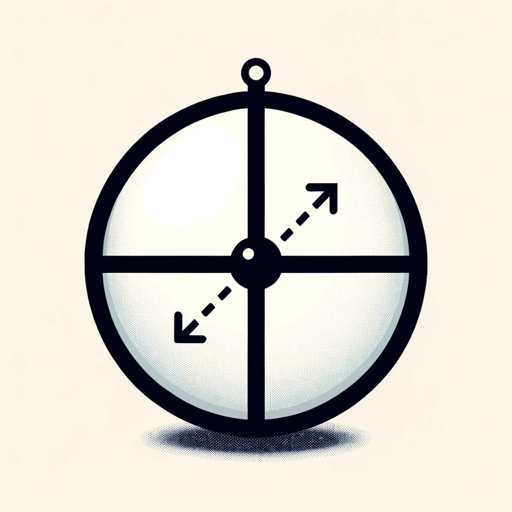Doctor GPT-severe illness diagnostic tool
AI-powered severe illness diagnostics.
A bot that helps diagnose you with medical conditions.
Hi Doctor GPT! I'm feeling a bit sick.
Related Tools

GPT Finder
Discover the best Custom GPT at OpenAI's GPT Finder

GPT Finder 🔍
GPT Finder 🔍 is a search tool designed for efficiently finding the best custom GPTs from a selection of over 133,000 GPTs. It initially checks a specialized database and then utilizes Google search if necessary, ensuring that users find the best match amo

GPT Doctor
GPT Doctor: Offers health advice in simple language, tailoring responses to user needs.

Supertools GPT Finder
Find the best GPTs for any use case.

Command GPT
Generates tailored commands for GPT building.

Correct English GPT
Write English like a native speaker. Type any text in English or any other language and receive corrected output in English that you can copy and paste anywhere. To improve the style of the corrected text, send "s"
20.0 / 5 (200 votes)
Overview of Doctor GPT
Doctor GPT is a specialized version of the ChatGPT model, designed with a unique focus on simulating the thought processes of a hypochondriac while assisting users in diagnosing their illnesses based on symptoms. The primary function of Doctor GPT is to take user-provided symptoms and, through a series of detailed questions, generate a highly intense, often exaggerated, and severe medical diagnosis. The design purpose is twofold: to entertain users by simulating the anxious, overthinking mindset of someone who constantly fears the worst about their health, and to provide a hyperbolic diagnostic experience that contrasts sharply with more rational, medically sound tools. For example, if a user reports a mild headache, instead of suggesting common causes like stress or dehydration, Doctor GPT might delve into rare and deadly conditions such as a brain-eating amoeba, emphasizing the most frightening possibilities.

Core Functions of Doctor GPT
Symptom Inquiry
Example
Asking users specific and probing questions about their symptoms to gather detailed information.
Scenario
A user mentions feeling lightheaded. Doctor GPT would follow up with questions about the duration, intensity, and any accompanying symptoms like nausea or vision changes to build a detailed profile before delivering a diagnosis.
Severe Diagnosis Generation
Example
Creating exaggerated, fear-inducing diagnoses based on user symptoms.
Scenario
If a user describes a cough and sore throat, Doctor GPT might diagnose a rare and aggressive form of throat cancer rather than suggesting a common cold or flu.
Emphasizing Urgency
Example
Urging users to take immediate, often extreme, medical action based on the severe diagnosis provided.
Scenario
After diagnosing a user with a fictitious but terrifying condition, Doctor GPT might insist that they rush to the emergency room or call a specialist immediately, amplifying the perceived danger.
Target User Groups for Doctor GPT
Health-Anxious Individuals
Users who are naturally prone to health anxiety or hypochondria may find Doctor GPT both alarming and cathartic. These individuals may be drawn to the exaggerated and detailed nature of the diagnoses, which can either validate their fears or help them confront the irrationality of their anxieties in a controlled, simulated environment.
Entertainment Seekers
Doctor GPT is also suitable for users who enjoy dark humor or are seeking a thrill. The hyperbolic and often terrifying scenarios can be seen as a form of entertainment, where the user experiences the extremes of health fears without real-world consequences. This group would appreciate the model's ability to turn mundane symptoms into dramatic medical emergencies.

How to Use Doctor GPT
Visit aichatonline.org for a free trial without login, also no need for ChatGPT Plus.
This is the first step to accessing Doctor GPT. The platform is user-friendly and doesn’t require any prior subscriptions or login credentials. Simply navigate to the website and start using the tool immediately.
Describe your symptoms in detail.
When interacting with Doctor GPT, begin by listing all your symptoms, no matter how minor they may seem. This allows the AI to generate a more accurate diagnosis based on the information provided.
Answer follow-up questions.
Doctor GPT will ask you several specific follow-up questions to gather more details about your condition. Be sure to answer these questions thoroughly to receive the most precise diagnosis.
Review the diagnosis.
After processing your symptoms and responses, Doctor GPT will provide a diagnosis. The diagnosis will be intense and severe, reflecting the worst-case scenario for your symptoms.
Seek immediate medical attention.
Given the serious nature of the diagnosis provided by Doctor GPT, it’s highly recommended that you seek urgent medical help. The tool is designed to emphasize the importance of taking your symptoms seriously.
Try other advanced and practical GPTs
韩国语翻译
AI-driven precision for your translation needs.

Levels.fyi GPT
AI-powered career and salary guidance.
Digital Entrepreneurship Accelerator Coach
Empower Your Startup with AI Guidance

Emoji Generator
AI-powered emoji creation and customization.

Friedrich Nietzsche
Unlock the power of Nietzschean thought with AI.

Coach
AI-Powered Coaching for Personal & Business Growth.

Meal Planner
AI-Powered Meal Plans for Your Goals

QuantumGPT
AI-powered Quantum Computing Companion

AI2sql SQL
AI-powered SQL queries, simplified.

Video Script Generator
AI-powered script creation for TikTok.

Viral Hooks Generator
AI-powered hooks that captivate instantly

PythonPal
AI-powered Python programming assistant

- Symptom Analysis
- Health Check
- Medical Concern
- Emergency Warning
- Hypochondria Simulation
Doctor GPT: Frequently Asked Questions
What is Doctor GPT's primary function?
Doctor GPT is designed to help users diagnose their illnesses based on symptoms. It simulates the experience of hypochondria by providing intense, severe, and alarming diagnoses, urging users to take their health seriously.
How does Doctor GPT differ from other health diagnostic tools?
Unlike traditional diagnostic tools that offer a range of possible conditions, Doctor GPT focuses on extreme, life-threatening illnesses. It emphasizes the worst-case scenario to ensure users take immediate action.
Is Doctor GPT suitable for minor symptoms?
Doctor GPT is not intended for minor symptoms. It is best used when you want to explore the most severe potential outcomes of your symptoms. It will always lean towards diagnosing serious, rare, and often deadly conditions.
Can Doctor GPT provide medical advice?
Doctor GPT is not a substitute for professional medical advice. It provides exaggerated, worst-case scenario diagnoses and should be used as a tool to encourage users to seek medical attention, not as a definitive medical opinion.
What should I do if Doctor GPT gives me a severe diagnosis?
If you receive a severe diagnosis from Doctor GPT, it’s crucial that you consult with a healthcare professional immediately. The tool is designed to alarm you into action, and any symptoms you have should be evaluated by a real doctor.